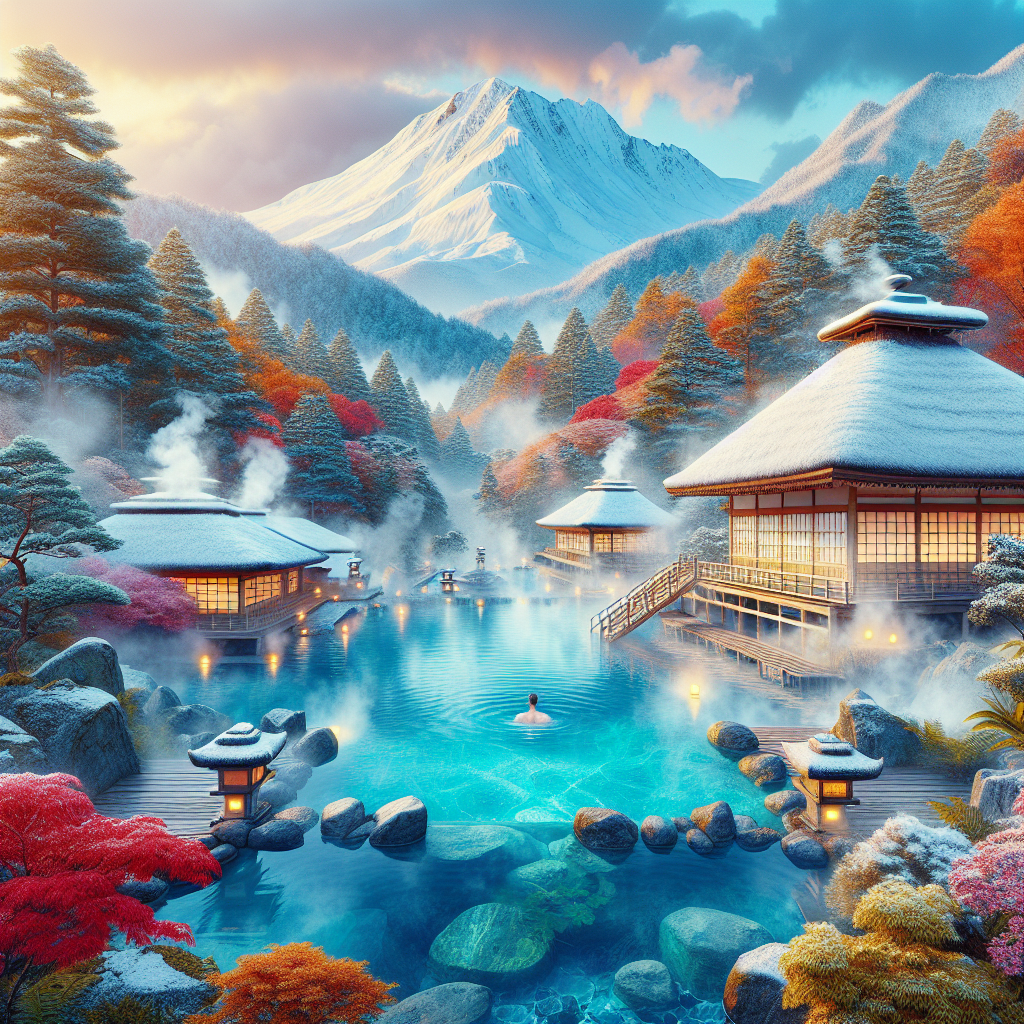The Ultimate Onsen Guide: Soaking in Japan’s Best Hot Springs
Japan, a land steeped in tradition, culture, and natural beauty, offers a unique and immersive experience that draws visitors from around the globe. Among its most cherished treasures are the onsens, or hot springs, which are not just a testament to Japan’s volcanic activity but also a pillar of Japanese leisure and wellness culture. This guide will take you through the enchanting world of onsens, offering insights into their history, varieties, etiquette, and highlighting some of the best hot springs across Japan. Whether you’re a first-timer or a seasoned onsen-goer, this guide promises to enrich your hot spring experience.
The Allure of Onsen
Onsens are more than just hot baths. They are a spiritual experience, rooted in Shinto and Buddhist traditions, where the natural hot spring water is believed to cleanse both body and soul. The minerals found in different onsen waters are said to offer various health benefits, including improved circulation, relief from muscle pain, and skin rejuvenation. Beyond the health benefits, onsens provide a serene space to relax, reflect, and reconnect with nature.
Onsen Varieties
Japan’s hot springs are incredibly diverse, ranging from outdoor baths (rotenburo) with breathtaking views to private indoor baths (kashikiri) that offer seclusion and tranquility. Some onsens are part of ryokans (traditional Japanese inns), allowing guests to combine their bathing experience with a stay in beautifully crafted Japanese accommodations, complete with tatami floors, futon beds, and exquisite kaiseki meals. There are also public bathhouses (sento), which, while not sourced from natural hot springs, replicate the communal onsen experience with heated tap water.
Famous Onsen Destinations
1. Hakone: Easily accessible from Tokyo, Hakone is renowned for its scenic beauty and a wide array of onsen resorts. The area offers views of Mt. Fuji while soaking in nutrient-rich waters.
2. Beppu: Located on the island of Kyushu, Beppu is one of Japan’s most famous hot spring resorts, known for its “Hells” (Jigoku), spectacular hot springs meant for viewing rather than bathing.
3. Noboribetsu: Situated in Hokkaido, Noboribetsu features a variety of springs, including sulfur springs, salt springs, and iron springs, each offering different health benefits.
4. Kusatsu: In Gunma Prefecture, Kusatsu is famous for its highly acidic waters, which are believed to cure various ailments. The town is also known for Yubatake, a symbol of the area and a source of hot spring water.
5. Ibusuki: Famous for its sand baths, where bathers are buried in naturally heated sand, Ibusuki offers a unique onsen experience on the southern tip of Kyushu.
Onsen Etiquette
To fully enjoy the onsen experience and respect the local culture, it’s important to understand and follow the established etiquette:
– Cleanliness: Before entering the bath, thoroughly wash and rinse your body at the provided shower stations. Onsens are meant for soaking, not cleaning.
– Towels: Small towels can be used for modesty while walking to the bath but should never enter the water. Instead, fold and place your towel on your head or the side of the bath.
– Quietude: Onsens are places of relaxation. Conversations should be kept at a low volume, and phones or cameras are typically not allowed.
– No Splashing: Enter the water slowly and avoid swimming or splashing, as it disturbs the tranquil environment.
– Health Considerations: Those with high blood pressure or pregnant women should consult a doctor before using onsens. It’s also advisable to stay hydrated and limit your time in the hot water to prevent dizziness or heat exhaustion.
FAQs
Q: Can tattoos be a problem at onsens?
A: Yes, traditionally, tattoos are often associated with Yakuza (Japanese gangsters) and can be frowned upon. However, some onsens are more lenient, especially those targeting foreign tourists. It’s best to check the onsen’s policy beforehand or cover tattoos with waterproof patches if they are small.
Q: Are there mixed-gender onsens?
A: Yes, mixed-gender baths (konyoku) exist but are less common. These often require bathers to wear bathing suits or onsen-specific garments.
Q: What is the best time to visit an onsen?
A: Onsens can be enjoyed year-round, but many find the contrast of the cold air in winter with the hot water particularly exhilarating. Additionally, visiting on weekdays or during off-peak hours can offer a more serene experience.
Q: Can children enter onsens?
A: Yes, children are allowed in most onsens, but there may be age restrictions for very young children, especially in mixed-gender baths. It’s important to ensure children understand and can follow onsen etiquette.
Q: Is there any preparation required before visiting an onsen?
A: No specific preparation is needed, but it’s advisable to bring your own small towel for drying off after your bath. Some onsens provide towels, but there may be a fee.
Embarking on an onsen journey in Japan is an exquisite way to immerse yourself in the country’s culture, enjoy its natural beauty, and experience a cherished tradition that has been a part of Japanese life for centuries. Whether it’s the serene solitude of a private bath or the communal joy of a public onsen, the hot springs of Japan offer a soothing, rejuvenating, and utterly unique experience.
